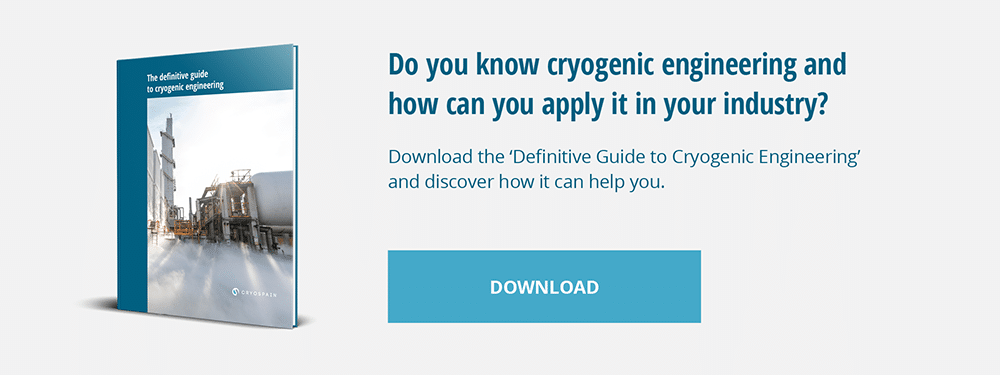Knowing the types of cryogenic valves available and their technical specifications is essential in order to choose the right one for your needs.
How do they work: Cryogenic Valves
Cryogenic valves operate at temperatures below -40°C, and are mainly used for gas liquefaction. In separation, transport and storage equipment, their operating temperature can reach below -270 ℃.
They are held in a naturally closed position to contain gases or other contained materials. In addition, they react at high pressure to open to allow flow. The flow will be maintained until the pressure drops again. Then, it will swing back, and be sealed with a special metal-seated hermetic seal to prevent leakage.
Choosing the right cryogenic valves
Cryogenic valves are increasingly used in industrial sectors such as petrochemical or natural gas. In other words, with low-temperature working materials which are also toxic, flammable or explosive and have a high permeability. Therefore, they must meet a number of special requirements to ensure their safe use.
Among these characteristics, they have a higher packing part and an extended stem. This reduces the heat transferred from the outside to the inside of the device.
Another element to be assessed is the design of the long-neck bonnet, which is related to the thermal conductivity of the material, the thermal conductivity area, the surface heat dissipation coefficient and the heat dissipation area. It is calculated using an experimental method.
As far as materials are concerned, manufacturers of cryogenic valves must take into account that the body of the device has to withstand temperature changes, and the possible expansion and contraction movements generated, avoiding deformation of its mounting. To this end, it should be noted that ferritic stainless steel can be used when the temperature is higher than -100 ℃ and austenitic stainless steel when it is lower. On the other hand, copper or aluminium alloys are used for small diameter, low pressure valves.
Related article: How do You choose the perfect cryogenic equipment manufacturer?
Cryogenic valves: types and differences
Today, we can find various shapes and sizes of cryogenic valves, suitable for working at various pressure ranges. Some of the most common are ball, butterfly, relief and solenoid valves. In addition, they can be manual or automatic, which is indispensable in large systems.
Cryogenic ball valves also include a polytetrafluoroethylene body. Their flow rate is therefore better than that of globe valves. They are also very efficient when a tight seal is required in systems. However, it should be noted that they can easily wear around the seals and the ball itself. Therefore, their application is recommended in systems with unrestricted flow paths.
Cryogenic relief valves protect against overpressure above a certain value and allow steam to escape if the safety limits are exceeded. In a similar vein, cryogenic non-return valves maintain pressure and prevent fluids from flowing back.
Cryogenic globe valves have a spherical shape and an internal moving disc that rotates at a 90-degree angle to the plane of its body mounting. In this way, they provide effective long-term sealing. However, they are not recommended for use in high flow systems.
A cryogenic gate valve has a wedge-shaped gate that closes in line with the body mounting. This results in minimal pressure drop, even in its fully open position.
A cryogenic butterfly valve has a circular disc in the centre, which gives them a shorter length. They are lightweight, economical, simple to operate, and are used in systems that need fast opening and closing actions.
We must always bear in mind that cryogenic gases are very sensitive and leaks can pose a serious risk. A cryogenic safety valve is, in this sense, a guarantee for the correct function of the system.
To sum up, cryogenic valves are an indispensable element in this type of installation, to guarantee safety and the correct handling of cryogenic liquids.
Keep reading: Cryogenic Industrial Solutions that every cryogenic company should offer
If you are interested in any cryogenic solution like cryogenic valves, Cryospain is the answer! We offer cryogenic engineering adapted to the needs of each project since the foundation of our company in 2002. Contact us and tell us about your project.











 Contacte-nos
Contacte-nos